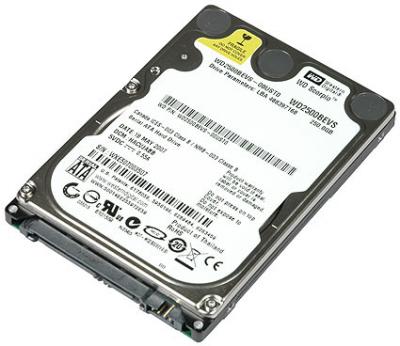it’s even got it’s own gravitational field:
The new Seagate Barracuda 7200.11 1.5TB HDD is 50 percent larger than the 1TB desktop drives available today, while the 500GB Momentus drives (available in 5400rpm and 7200rpm flavors) are 56 percent larger than the current high-capacity 320GB 2.5″ laptop drives.
…
The main difference between the new 1.5TB drive and the 1TB ST31000340AS already available is their platter density. Both disks are four-platter designs, but the 1TB drive uses four 250GB platters, while the new 1.5TB is apparently using four 375GB platters.
…
We could see modest increases through the end of the year, but 2TB before 2009 is a toss-up. 500GB platters are probably still a ways away, and while a 5x400GB platter configuration would do the trick, the first generation 1TB five platter drives tended to run hotter and noisier than the units that the followed.
I am fully aware that in five years someone will link to this post and guffaw at what a rube we all were for being impressed by this. I think Ars is being conservative here – someone is sure to roll out a 2TB drive (on 5 platters) before the end of the year. If not Seagate, then Hitachi.
While the desktop drive is noteworthy for its sheer size, the laptop drive doesn’t impress me at all, however. The future of laptop drives is SSD and SSD alone (I say this without irony, even though I just bought a 250 GB drive for my own laptop a few months ago). The far more important news on that front is that Samsung is opening the flood gates of volume production:
Seoul, Korea – July 9, 2008: Samsung Electronics Co., Ltd., the world leader in advanced semiconductor technology, announced today that it has begun mass producing 1.8- and 2.5-inch multi-level cell (MLC)-based solid state drives (SSD) with a 128 Gigabyte (GB) storage capacity. Mass production of the Samsung MLC-based 64GB SSD also began this month.
…
Power consumption for the Samsung SSD is exceptionally low in standby mode at approximately 0.2 watts and in active mode at 0.5 watts. The Samsung MLC-based SSD has a write speed of 70MB/s and a read speed of 90MB/s.
Somehow I don’t think SSDs will ever supplant 3.5″ on the desktop, though I do think that eventually 2.5″ will become desktop standard. So the progress by Seagate on pushing the envelope on the notebook drive capacity is still relevant.

